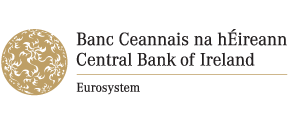Of the many plates asset managers are currently spinning when it comes to ESG regulation, the impending upgrade of the Sustainable Finance Disclosure Regulation (SFDR) is requiring their most immediate attention.
Having already been delayed by six months until January 2023, due to the “length of technical detail” of the directive, the race is now on to be compliant with the regulations with less than three months to go.
In a bid to help with this, both the Central Bank of Ireland (CBI) and the Central Bank of Luxembourg (CBL) have said they would fast-track SFDR fund updates, with asset managers required to submit their amendments to the regulators by 1 December to be ready for ‘level 2’ of the regulation.
Despite this, asset managers are having to grapple with ambiguous and ever-changing definitions within SFDR and the EU Taxonomy, which aims to clarify what investments are environmentally sustainable.
In September, the European Supervisory Authorities (ESA) sent fresh questions to the European Commission over key aspects of the regulation, many of which have not yet been answered.
Previous clarifications around the regulation have, in some cases, led asset managers to downgrade their ETFs from 'dark green’ Article 9 to ‘light green’ Article 8, or from Article 8 to ‘non-ESG’ Article 6, while failure to meet the new standards could also inflict downgrades on funds.
Now, with the level 2 requirements impending, what will the changes mean for ETF investors?
What are SFDR’s level 2 requirements?
SFDR’s level 1 regulatory technical standard (RTS) has been applied since March 2021 and requires financial institutions to report on the ESG-related activity of the sectors and companies they invest in.
The proposed level 2 RTS has been designed to supplement the level 1 text, giving more detail on what asset managers will have to disclose and how it should be presented with a focus on sustainability risks, sustainability factors and technical disclosures.
Additionally, asset managers will also be required to report on 18 mandatory principle adverse impact statements (PAIS), assessing the sustainable impact of their investments, effective 30 January.
Investors will also have to prove their alignment to one of six environmental objectives via the Taxonomy Regulation.
These comprise of climate change mitigation; climate change adaptation; the sustainable use and protection of water and marine resources; the transition to a circular economy; pollution prevention and control and the protection and restoration of biodiversity and ecosystems.
How will the changes impact ETFs?
The biggest impact facing ETFs will be the potential downgrade of products that do not meet the more stringent and thorough sustainability criteria demanded by level 2.
The number of downgrades could be substantial, particularly given the level of fund upgrades over the past year, as a result of asset managers marking their own homework in a bid to capture growing investor demand for Article 8 or 9 ETFs.
For example, in Q2 alone, 700 products switched their SFDR status with the majority upgrading from Article 6 to Article 8, according to Morningstar. No funds were downgraded from Article 8 or 9 to Article 6 while just 16 were downgraded from Article 9 to Article 8.
In the ETF space, many have upgraded from Article 8 to 9, as seen by the JPMorgan Carbon Transition Global Equities UCITS ETF (JCPT) after its index became a designated climate transition benchmark, investing at least 80% of its assets in sustainable investments.
Hortense Bioy, global director of sustainability research at Morningstar, said: “Passives are underrepresented in Article 8 and overrepresented in Article 9. Overall, passives account for 23% of all funds in the Article 9 category due to the very sizable number of ETFs that track Paris-aligned benchmarks.”
According to Bioy, there is currently a debate as to whether these funds have a place in the Article 9 category at all.
Highlighting the scale of downgrades we could see, Morningstar recently found that 23% of funds labelled Article 8 do not meet their criteria as an ESG fund.
What do ETF investors need to know?
Given the alphabet soup of the regulatory landscape, investors need to know how to slice through the uncertainty and whether asset managers interpret the regulation as they and their clients do.
Downgrading an ETF, and upgrading in some cases, could cause issues with the end client who has stated how they would like to be invested from an ESG perspective.
In this regard, it is important to understand how the ETFs they are invested in interpret SFDR and how they are aligned with the taxonomy.
“Currently, not all asset managers are reporting their SFDR considerations,” Bioy said. “Roughly 90% of Article 8 and Article 9 funds report on their SFDR considerations, however, less than half report on the minimum percentage of sustainable investment and just a quarter report on their sustainable taxonomy alignment.”
Part of the problem asset managers are trying to grapple with, according to Gavin Haran, head of policy for asset management at Macfarlanes, is there is currently no minimum level defined for Article 8 funds. For example, asset managers can prove they are aligned with one of the six objectives defined by the taxonomy while disclosing they have 0% of sustainable investments.
This is likely to be even more important given MiFID II’s suitability requirements which must consider their client’s sustainable preferences while also considering their other investment objectives.
Bioy said: “Financial intermediaries will be required to ask their clients what their sustainability preferences are, and if a client says it wants sustainability in its portfolio, the investment manager will have to find a portfolio that has this exposure.”
This article was first published in ESG Unlocked: Europe out in front, an ETF Stream report
Related articles




